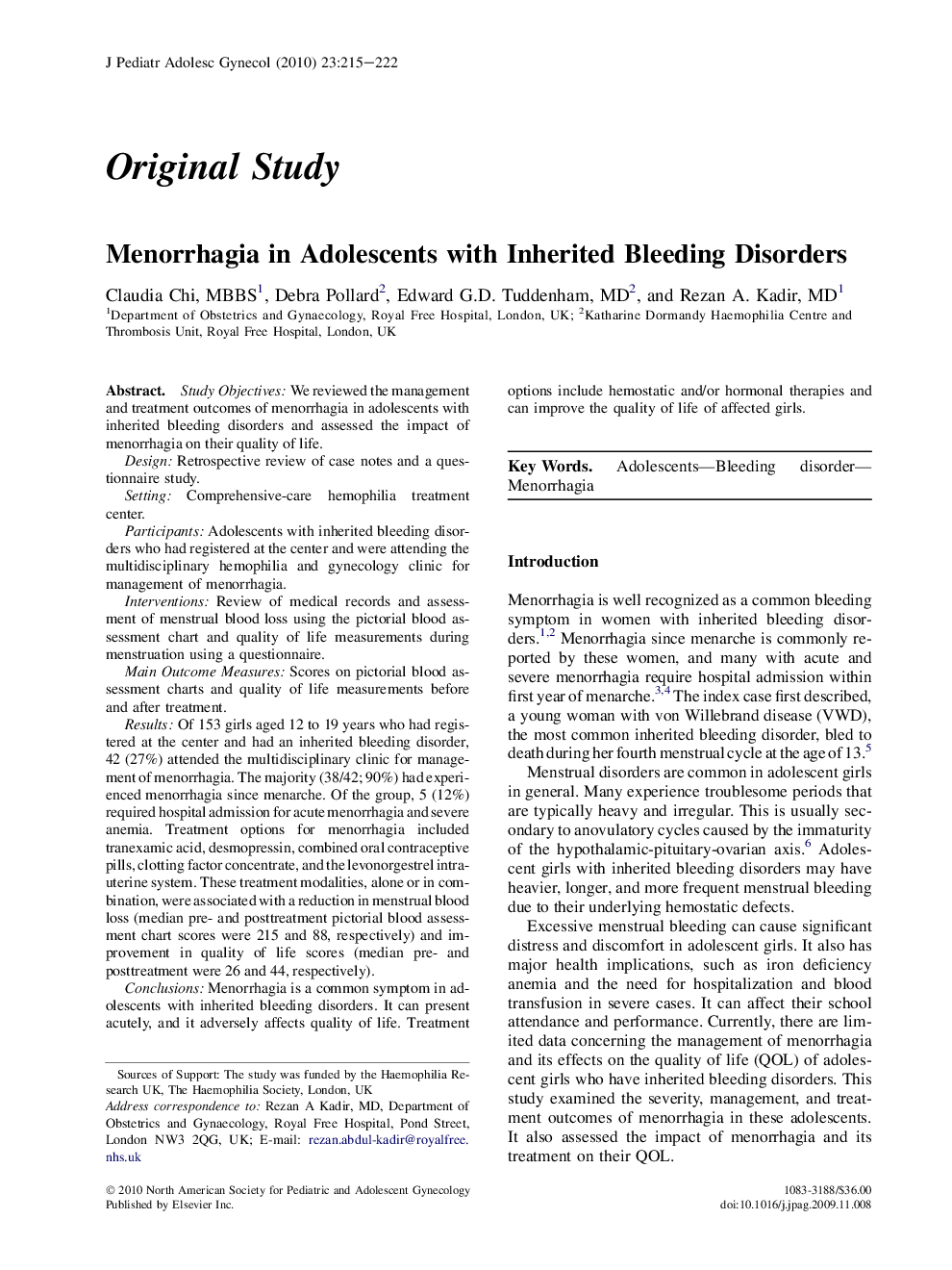| Article ID | Journal | Published Year | Pages | File Type |
|---|---|---|---|---|
| 3961969 | Journal of Pediatric and Adolescent Gynecology | 2010 | 8 Pages |
Study ObjectivesWe reviewed the management and treatment outcomes of menorrhagia in adolescents with inherited bleeding disorders and assessed the impact of menorrhagia on their quality of life.DesignRetrospective review of case notes and a questionnaire study.SettingComprehensive-care hemophilia treatment center.ParticipantsAdolescents with inherited bleeding disorders who had registered at the center and were attending the multidisciplinary hemophilia and gynecology clinic for management of menorrhagia.InterventionsReview of medical records and assessment of menstrual blood loss using the pictorial blood assessment chart and quality of life measurements during menstruation using a questionnaire.Main Outcome MeasuresScores on pictorial blood assessment charts and quality of life measurements before and after treatment.ResultsOf 153 girls aged 12 to 19 years who had registered at the center and had an inherited bleeding disorder, 42 (27%) attended the multidisciplinary clinic for management of menorrhagia. The majority (38/42; 90%) had experienced menorrhagia since menarche. Of the group, 5 (12%) required hospital admission for acute menorrhagia and severe anemia. Treatment options for menorrhagia included tranexamic acid, desmopressin, combined oral contraceptive pills, clotting factor concentrate, and the levonorgestrel intrauterine system. These treatment modalities, alone or in combination, were associated with a reduction in menstrual blood loss (median pre- and posttreatment pictorial blood assessment chart scores were 215 and 88, respectively) and improvement in quality of life scores (median pre- and posttreatment were 26 and 44, respectively).ConclusionsMenorrhagia is a common symptom in adolescents with inherited bleeding disorders. It can present acutely, and it adversely affects quality of life. Treatment options include hemostatic and/or hormonal therapies and can improve the quality of life of affected girls.
